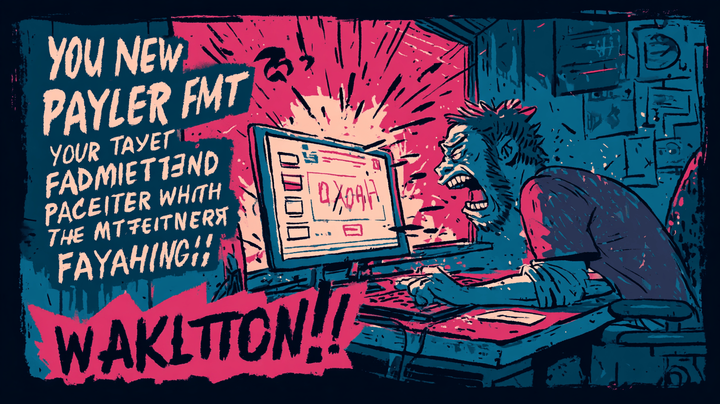How NOT To Build A Startup

How not to build a startup? Well, according to every startup handbook, in order to build a successful business, one must follow the following steps:
- Choose a “Niche Market”
- Meet relevant people in that market, interview them and listen to their problems, trying to find a common pain point
- Validate that pain point via more interviews and additional research
- Have an idea for a product to solve that need
- Build an MVP
- Validate the MVP with your potential customers, iterate or pivot if necessary.
However, most startups I know didn’t follow that path. They started with the idea (point #4) and moved forward from there. I certainly did when I developed The Task Ninja (my tasks and customers management tool).
Even now, with all the information available to startups, with all the advice from the gurus, accelerators, websites, and whatnot, startups keep on failing. Why?
Building Useful Products Is Not Sexy
There are hundreds of articles giving elaborate enumerations of the reasons why startups fail. They usually include running out of cash, problems with the team, scaling too fast and, yes, not solving a market need.
In the end, I think it all boils down to this last reason. Building useful products is not sexy.
Yes, that’s probably a sweeping generalization, but startups, especially those with young team members are not looking to solve any need for health insurance companies. They want to build a sexy product or develop a cool idea someone just had.
Most of the times, that idea usually involves some kind of social network, e-commerce platform, or a variation of a successful startup (“we are the Uber for…”). Even if you don’t come from the startup ecosystem, chances are you will come up with an idea and then try to build a product out of it.
Why You Shouldn’t Turn Your Idea Into A Startup
That was the case for my SaaS product. It all started back when we were trying to build a web design company.
One of the first things we needed was a tool to manage our customers and tasks. Unfortunately, we couldn’t find a simple, easy-to-use tool for that. There were lots of big CRM products and project management tools, but none of them served our need for a small, simple tool covering the most common functionality from both.
As a result, we had the idea of developing a product, and that idea led us to actually building the product without further validation.
Yes, it’s true that there was a real need involved, but it was flawed for two reasons:
- We extrapolated our need, thinking that if we had this need, probably lots of other companies out there will have it too.
- We had no idea who our customers were. We had no niche market. We were a small company, but that’s not concrete enough.
Thus, from my experience and what I learned from my failure, this would be my advice to people building a startup from an idea:
Don’t Build A Startup From An Idea
No matter how awesome you think your idea is, or how good you think you can execute that idea.
The truth is, your idea is worthless. There are lots of people out there having amazing ideas too, and they fail. The numbers are overwhelming.
Instead, find a niche, meet people from that niche, immerse yourself there, and get to know their problems, their needs. Obviously, you won’t necessarily find a pain point in every niche, and not all niches will have a valid need that can be solved with a scalable product. However, starting from a real need is the way to build a business with a product that sells itself.
Validate Your Idea
If you are already in the process of launching a startup based on your idea, before going any further, validate your idea.
Here, it’s easy to fall into the vanity trap, and get people to tell you the answers that you want to hear.
Resist the urge to do that.
You need to find out if your idea is worth something. Meaning, if there are people that will actually pay for it.
When going through this process, first talk to your potential users or customers and learn about their problems. Then, consider if your product may solve that problem, and ask them to ratify that. Listen to them.
Keep in mind that your product may not solve their needs at all, so be honest with yourself when conducting that process. Don’t try your customers to agree with you. There’s a huge gap between, “yeah, I would buy that” and “Good heavens! Is that available now?”
Remember, your goal is to find out if your idea has a future, while you still have time to change it.
Target A Very Specific Niche Market
This is essential. You need to target a specific, very concrete niche market.
Furthermore, you need to be able to clearly identify and find your customers, out there in the real world or on the internet. Not as “yeah, my customers would be people like…” but like this: “some of my customers would be John, Alice, and ACME Inc., here is their contact info”.
As an example, The Task Ninja was targeted towards “small companies with clients”. That’s just not specific enough. We had no idea where to contact our potential customers because we didn’t even have a clear idea of what our customers were.
Conversely, as a blogger myself, it would be easy for me to start a business to solve a need for professional bloggers. I am part of the blogging community, so it’s easy for me to get in contact with fellow bloggers. I am a member of several blogging groups, meet bloggers regularly, and even have a blogger mastermind group. In fact, in my case, I should dive into an even narrower niche, like digital nomad bloggers, or entrepreneurship bloggers.
Try To Get Customers Before Building Anything
Related to the previous point, you should be able to get people to buy your product, or at least interest them enough to join your beta testers group. Before even having the product. Before writing a single line of code.
Ideally, you need to find people that need the product so badly that they will pay for it upfront. If you have a minimum viable product, or at least a way of solving their needs manually while your product is not fully developed, start with that. Don’t automate anything until you have at least one customer.
Of course, not all products will allow you to do that, but even if they don’t, it’s important that you have a list of customers to start with when you finally release your product.
In Summary
In this article, I describe how not to build a startup based on my own experiences. The problem that most startups face nowadays is that they start with an idea, instead of starting with a niche market and a pain point.
We tend to overvalue ideas. We need to let them go and instead focus on solving a real need.
As a software developer myself, it has been traditionally difficult for me to do that. I tend to fall in love with products. However, I am learning to let my ideas and products go, and focus on finding that need that needs to be solved.
What about you?




Comments ()